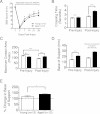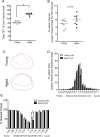Characterization of recovery, repair, and inflammatory processes following contusion spinal cord injury in old female rats: is age a limitation?
- PMID: 25512759
- PMCID: PMC4265993
- DOI: 10.1186/1742-4933-11-15
Characterization of recovery, repair, and inflammatory processes following contusion spinal cord injury in old female rats: is age a limitation?
Abstract
Background: Although the incidence of spinal cord injury (SCI) is steadily rising in the elderly human population, few studies have investigated the effect of age in rodent models. Here, we investigated the effect of age in female rats on spontaneous recovery and repair after SCI. Young (3 months) and aged (18 months) female rats received a moderate contusion SCI at T9. Behavioral recovery was assessed, and immunohistocemical and stereological analyses performed.
Results: Aged rats demonstrated greater locomotor deficits compared to young, beginning at 7 days post-injury (dpi) and lasting through at least 28 dpi. Unbiased stereological analyses revealed a selective increase in percent lesion area and early (2 dpi) apoptotic cell death caudal to the injury epicenter in aged versus young rats. One potential mechanism for these differences in lesion pathogenesis is the inflammatory response; we therefore assessed humoral and cellular innate immune responses. No differences in either acute or chronic serum complement activity, or acute neutrophil infiltration, were observed between age groups. However, the number of microglia/macrophages present at the injury epicenter was increased by 50% in aged animals versus young.
Conclusions: These data suggest that age affects recovery of locomotor function, lesion pathology, and microglia/macrophage response following SCI.
Keywords: Aging; Complement; Inflammation; Locomotor function; Spinal cord injury.
Figures






References
-
- Cifu DX, Seel RT, Kreutzer JS, Marwitz J, McKinley WO, Wisor D. Age, outcome, and rehabilitation costs after tetraplegia spinal cord injury. Neurorehabilitation. 1999;12(3):177–185.
LinkOut - more resources
Full Text Sources
Other Literature Sources

